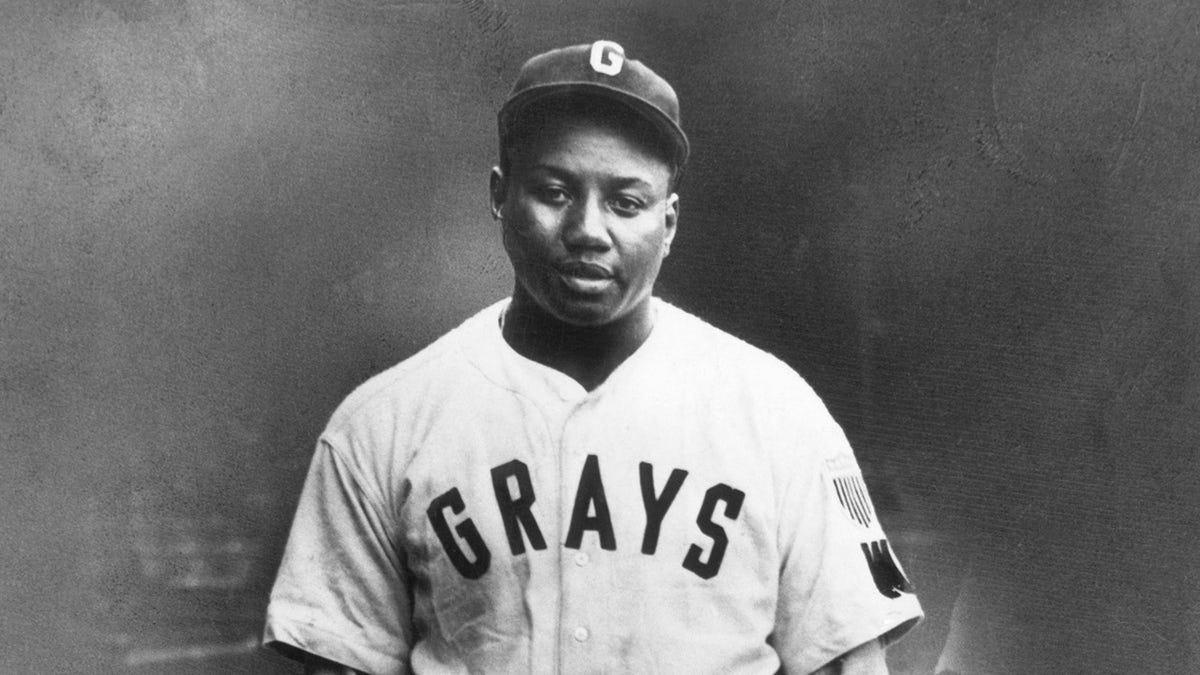On Wednesday, Major League Baseball officially combined all Negro League stats into its record books. Which, well, finally.
And the world got reminded of Josh Gibson, perhaps the best baseball player never to play in the major leagues.
With the merger of the records, Gibson is now the leader in career batting average at .372 — five points better than the previous record holder Ty Cobb. Gibson is also now the all-time slugging percentage leader (.718), passing the legendary Babe Ruth in that category.
This is a FREE post. But, “The Replay” will soon be putting the majority of its content behind a pay wall. Become a paid subscriber today to get the lowest rate! It’s just $5 a month or $50 for the year!
While those new records draw a lot of attention, it’s also worth doing a slightly deeper dive on Gibson, the player. Because he was, in a word, amazing.
The story of how he came to play professional baseball is something out of a novel. As MLB.com noted:
In 1930, as the story goes, Gibson was a spectator at a game in which Homestead Grays catcher Buck Ewing sustained an injury. An 18-year-old Gibson, who by that time had established a reputation in semipro games, was asked to suit up as a replacement. With that, a great baseball career was launched.
The entirety of Gibson’s career was like that. He drew the nickname “the Black Babe Ruth” and, like the Babe, was seen as a sort of larger-than-life figure on and off the diamond.
As Robert O’Connell wrote of Gibson in the New York Times in 2018:
The right-handed Gibson was the folk hero, all staggering physique and tall-tale feats; he swung a 40-ounce bat alleged to have once sent a homer 580 feet out of Yankee Stadium, besting Mickey Mantle’s quasi-mythic 565-foot blast.
Stuff like that followed Gibson. The rumor goes that in 1930, at just 18 years old, Gibson hit a ball over the 457-foot center field fence at Forbes Field in Pittsburgh. And that he actually hit not one but three balls out of Yankee Stadium in 1930, 1934 and 1937., respectively.
“I saw him hit a ball one night in the Polo Grounds that went between the upper deck and lower deck and out of the stadium,” Buck Leonard, Gibson’s longtime teammate and a fellow Hall of Famer, once said. “It must have gone 600 feet."
Walter Johnson, the legendary Washington Senators pitcher (and Hall of Famer), played against Gibson in a spring training game in 1939. Of Gibson, Johnson said:
“There is a catcher that any big league club would like to buy for $200,000. I’ve heard of him before. His name is Gibson. They call him ‘Hoot’ Gibson, and he can do everything. He hits that ball a mile. And he catches so easy he might just as well be in a rocking chair. Throws like a rifle. Bill Dickey isn’t as good a catcher. Too bad this Gibson is a colored fellow.”
Gibson’s lifetime numbers are impressive — if not overwhelming: 2,841 at bats, 741 runs scored, 1,026 hits, 194 homeruns, 872 RBI, 44 stolen bases .361 average.
But, Negro League records are notoriously scarce and it’s widely acknowledged that those stats don’t come close to capturing Gibson’s greatness. Gibson is estimated to have hit 800 homeruns between his time in the Negro League and other independent leagues. The current MLB homerun record is held by Barry Bonds at 762.
Gibson never got a chance to play Major League baseball. He was struck down by a stroke at the age of 35 — just months before Jackie Robinson became the first black player to appears in an MLB game.
In 1972, Gibson, along with Leonard, became the first two men who played exclusively in the Negro League to be inducted into the Baseball Hall of Fame.
They followed hurler Satchel Paige into Cooperstown. Paige, who pitched the majority of his career in the Negro League, was the first player inducted by the Committee on Negro League Veterans in 1971.
Of Gibson, Paige once said:
“Josh was the greatest hitter I ever pitched to, and I pitched to everybody. There’s been some great hitters — Williams, DiMaggio, Musial, Mays, Mantle. But none of them was as great as Josh. I used to get Williams out with my screwball on the outside. Musial, the same thing. DiMaggio, with my sidearm stuff. Mays, he's no Josh. I got Mays with a fastball on his letters. Mantle had to bunt me. But Josh, I had to throw sidearm curves to Josh, break it on the outside corner and pray. Break it inside, he'd just rip it.”
High praise.





I visited the Negro League Museum last year in Kansas City. Highly recommended if you're in the area.
I really love what the MLB The Show video games have done the past couple of years with their Negro League storylines/game modes. For a lot of us sports fans, sports was our entry way into learning about history (back then through books; both non-fiction and fiction like Dan Gutman's "& Me" series) so to have this history introduced for a new generation of fans is cool.
What's also significant with the integration of the Negro League records is that Josh Gibson surpassed Ty Cobb for the overall career batting average, a man who attended Negro League games, quoted advocating for the integration of African-Americans in baseball, expressed his admiration for Jackie Robinson and Willie Mays and (unfortunately) someone who many people (including myself) mistakenly grew up believing was a raging racist (and whom, according to social media, many still believe despite that allegation being rebuffed in recent years). If both gentleman were here today, it's more likely they would've been at Cooperstown together shaking hands celebrating this moment and showering one another with compliments.